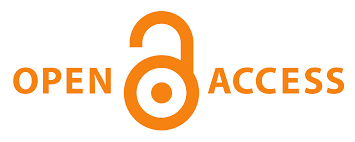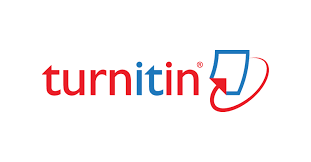A Study of Accuracy and Translation Technique in Narrative Text by Using Google Translate Application
Main Article Content
Zainuddin Hasibuan
This study aims to determine the accuracy of narrative text translation by using Google Translate Application and to describe translation techniques which are used by the translator in translating source text (ST) into target Text (TT). This research is a qualitative method that uses descriptive research approach to analyze the accuracy of narrative text translation and translation techniques. The result show The proportion of narrative text translated using the Google Translate application, namely from 16 analyzed data, resulting in 9 data (56.25%) as an accurate translation, 5 data (31.25%) as a less accurate translation, and 2 data (12.5%) as a not correct translation. It means that using the Google Translate Application can provide effective and accurate translations while also assisting us in transforming source language into target content fast and efficiently. Translation techniques which are used by the translator consists of single translation technique and couplet translation technique. Single translation technique consists of 14 data while couplet translation technique consists of 2 data. Literal translation technique consists of 6 data (37,5%), modulation translation technique consists of 3 data (18,75%), calque translation technique consists of 3 data (18,75%), modulation + calque and calque + modulation translation technique both of them consists of 1 data (6,25%), transposition translation technique consists of 1 data (6,25%), and reduction translation technique is also only 1 data (6,25%). The most dominant translation techniques which are used by the translator is literal translation that have 6 data (37,5%). It means that the form of translation adopting domestication of translation than a foreignizing translation.
Alam, A. (2020). Google Translate sebagai alternatif media penerjemahan teks bahasa asing ke dalam bahasa Indonesia. Jurnal Instruksional, 1(1).
Aziz, K., & Adika, D. (2024). A Review of Netflix’s Indonesian Subtitle Translation in the “Pulp Fiction” Movie. JETLEE: Journal of English Language Teaching, Linguistics, and Literature, 4(1), 1-12.
Beiler, I. R., & Dewilde, J. (2020). Translation as translingual writing practice in English as an additional language. The Modern Language Journal, 104(3), 533–549. https://doi.org/10.1111/modl.12660
Berita Update. (2020, October 8). Google Translate, inilah kelebihan dan kekurangannya. Kumparan.com. https://kumparan.com/amp/berita-update/google-translate-inilah-kelebihan-dan-kekurangannya
Collins Cobuild. (2006). Advanced learner’s English dictionary. HarperCollins Publisher.
Creswell, J. W. (2014). Research design: Qualitative, quantitative and mixed methods approaches (4th ed.). Sage.
Creswell, J. W., & Poth, C. N. (2018). Qualitative inquiry and research design. SAGE Publications.
Dubourg, E., & Baumard, N. (2022). Why and how did narrative fictions evolve? Fictions as entertainment technologies. Frontiers in Psychology, 13, 786770. https://doi.org/10.3389/fpsyg.2022.786770
Halimah. (2018). Comparison of human translation with Google translation of imperative sentences in procedures text. Jurnal Pendidikan dan Sastra, 17(1).
Halverson, S. L. (2015). Translation theory and development studies: A complexity theory approach. https://doi.org/10.1080/14781700.2015.1012739
Hastuti, D. (2010). Narrative versus recount. PT Multazam Mulia Utama.
Hendrawati, A. (2017). The translation of idiomatic expression in Bloodline into Garis Garah. Retorika: Jurnal Ilmu Bahasa, 3(2).
Hidayati, N. N. (2024). Research Article Trends Globally on Translation: A Bibliometric Analysis with ScienceDirect Database. JETLEE: Journal of English Language Teaching, Linguistics, and Literature, 4(2), 169-189.e Teaching, Linguistics, and Literature, 2(2), 123-132.
Ismailia, T. (2022). The Analysis of Errors on Translating Informative Texts by Google Translate. JETLEE: Journal of English Languag
Jannah, I. R., Yenni, C., Rahmi, T., & Alimnur, A. (2022). An Error Analysis of Students’ Translation In Narrative Text. JETLEE: Journal of English Language Teaching, Linguistics, and Literature, 2(1), 1-10.
Kurniasih, I. (2017). An analysis of grammatical errors of using Google Translate from Indonesia to English in writing undergraduate thesis abstract among the students’ English department of IAIN Metro. IAIN Metro.
Machali, R. (2000). Pedoman bagi penerjemah. PT Grasindo.
Martinez Melis, N., & Hurtado Albir, A. (2001). Assessment in translation studies: Research needs. Meta Journal, 46(2).
Miles, M. B., Huberman, A. M., & Saldana, J. (2014). Qualitative data analysis: A method sourcebook. Sage Publications.
Miles, M. B., Huberman, A. M., & Saldana, J. (2019). Qualitative data analysis: A methods sourcebook (4th ed.). Arizona State University.
Molina, L., & Hurtado Albir, A. (2002). Translation techniques revisited: A dynamic and functionalist approach. Meta: Journal des Traducteur/Meta: Translators’ Journal, 47(4).
Nababan, M. R. (2003). Teori menerjemah bahasa Inggris. Pustaka Pelajar.
Nababan, M., & Nuraeni, A. (2012). Pengembangan model penilaian kualitas terjemahan. Surakarta: Universitas Sebelas Maret.
Nababan, M., et al. (2012). Keterkaitan antara latar belakang penerjemah dengan proses penerjemahan dan kualitas terjemahan. PPs Universitas Sebelas Maret Surakarta.
Nadhianti, M. (2016). An analysis of accuracy level of Google Translate in English-Bahasa Indonesia and Bahasa Indonesia-English translation. University of Yogyakarta.
Ningsih, N. S., & Rahman, F. (2023). Exploring the Unique Morphological and Syntactic Features of Singlish (Singapore English). Journal of English in Academic and Professional Communication, 9(2), 72-80.
Oktaviani, S. (2019). Ideologi penerjemahan teks teknis. Swara Patra: Majalah Ilmiah PPSDM Migas, 9(1), 19–29.
Saifullah. (2020, July 20). Terjemahan cerita Issumboshi chapter 12. Saifullah.id. https://www.saifullah.id/2020/terjemahan-cerita-issumboshi-chapter-12
Sinaga, R. T. P. (2020). The students’ difficulties in writing a narrative text at a grade ten of SMA Negeri 4 Permatang Siantar. Nommensen Journal of English Students (NoJES), 1(1).
Toury, G. (2021). The nature and role of norms in translation. In The Translation Studies Reader (pp. 197–210). Routledge. https://doi.org/10.4324/9780429280641
Ulfah, M. (2015). An accuracy analysis in Indonesian-English translation using “Google Translate” machine translation. UIN Walisongo.
Venuti, L. (2017). The translator’s invisibility: A history of translation. Routledge. Retrieved from https://www.academia.edu/25783955/Venuti_The_Translators_Invisibility_A_History_of_Translation
Wahyuningsih, N. S. (2021). Analisis kesalahan terjemahan teks panduan dari Bahasa Indonesia ke Bahasa Inggris. Lingua: Jurnal Ilmiah, 17(1), 62–79. https://doi.org/10.35962/lingua.v17i1.65
Yilmaz, K. (2013). Comparison of quantitative and qualitative research traditions: Epistemological, theoretical, and methodological differences. European Journal of Education, 42(2). https://doi.org/10.1111/ejed.12014
Yinhua, X. (2011). Equivalence in translation: Features and necessity. International Journal of Humanities and Social Science, 1(10).




